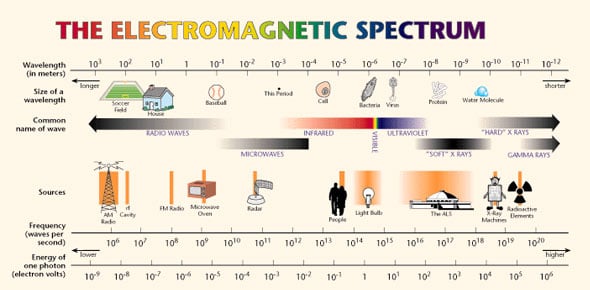Em Spectrum - Gamma Rays

This quiz will test your basic understanding of Gamma Rays.
Questions and Answers
- 1.
Gamma rays have the lowest frequency in the EM spectrum.
- A.
True
- B.
False
Correct Answer
B. FalseExplanation
Gamma rays actually have the highest frequency in the electromagnetic (EM) spectrum, not the lowest. The EM spectrum is a range of different types of electromagnetic radiation, ordered by their frequencies. Gamma rays have the shortest wavelengths and highest frequencies, while radio waves have the longest wavelengths and lowest frequencies. Therefore, the statement that gamma rays have the lowest frequency is incorrect.Rate this question:
-
- 2.
Gamma photons travel at the speed of sound.
- A.
True
- B.
False
Correct Answer
B. FalseExplanation
Gamma photons travel at the speed of light.Rate this question:
-
- 3.
Can gamma rays be emitted by radioactive decay, nuclear fusion and nuclear fission?
- A.
Yes
- B.
No
Correct Answer
A. YesExplanation
Gamma rays can be emitted by radioactive decay, nuclear fusion, and nuclear fission. Radioactive decay occurs when an unstable nucleus emits radiation, which can include gamma rays. Nuclear fusion involves the combination of atomic nuclei, and during this process, gamma rays can be released. Similarly, in nuclear fission, the splitting of atomic nuclei can result in the emission of gamma rays. Therefore, gamma rays can be emitted by all three processes mentioned.Rate this question:
-
- 4.
The three main types of radioactive decay are:
- A.
Alpha, beta, delta
- B.
Alpha, beta, gamma
- C.
Beta, gamma, delta
Correct Answer
B. Alpha, beta, gammaExplanation
The correct answer is alpha, beta, gamma. Alpha decay occurs when an unstable nucleus emits an alpha particle, consisting of two protons and two neutrons. Beta decay involves the emission of a beta particle, which can be either an electron or a positron. Gamma decay, on the other hand, involves the release of gamma rays, which are high-energy photons. These three types of radioactive decay are the most common and well-known mechanisms by which unstable atoms undergo nuclear transformations.Rate this question:
-
- 5.
Nuclear fussion is when an atom is split into two.
- A.
True
- B.
False
Correct Answer
B. FalseExplanation
Nuclear fissionRate this question:
-
Quiz Review Timeline +
Our quizzes are rigorously reviewed, monitored and continuously updated by our expert board to maintain accuracy, relevance, and timeliness.
-
Current Version
-
Mar 19, 2022Quiz Edited by
ProProfs Editorial Team -
Sep 15, 2009Quiz Created by
L-ionel


